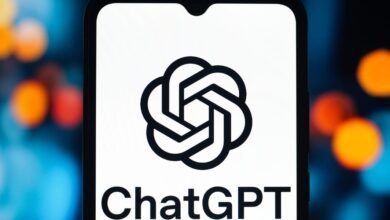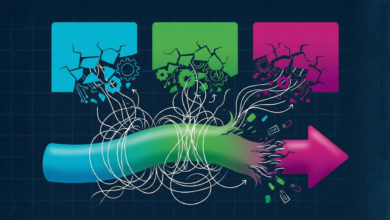Topic: Prompt engineering
-

6 OpenAI Staff Tips to Master ChatGPT
Ask complex, challenging questions to push the model into deeper reasoning and elicit more sophisticated, detailed explanations. Assign specific personas or expertise levels to ChatGPT to tailor its responses, enhancing relevance and depth for both specialized and everyday topics. Regularly audit...
Read More » -

Hero's New SDK Automates Your AI Prompts
Many users struggle with writing effective AI prompts, leading to the emergence of specialized roles like prompt engineers and the integration of user-friendly features such as auto-generated recommendations in consumer applications. Hero, a startup founded by ex-Meta employees, has developed an ...
Read More » -

AI's New Jobs: Forensic Vibers and 10 Other Future Roles
AI integration is creating new professions that blend technical skills with ethical oversight, strategic thinking, and psychological insight to ensure systems are productive and aligned with goals. Over 85% of American workers expect prompt-writing skills to become essential, with younger generat...
Read More » -

5 Prompt Engineering Tips for Better Vibe Coding
Vibe coding uses natural language descriptions to generate functional code with AI, making software development more accessible to non-experts but requiring clear communication for success. Effective prompt engineering involves using concise, specific instructions and breaking complex projects in...
Read More » -

Prompting Generative AI Chat Models: A Comprehensive Guide
Explore the world of generative AI chat models with our comprehensive guide. Learn how to effectively prompt these tools for applications in content creation, education, and more, while understanding their unique capabilities and limitations.
Read More » -

Future-Proof Your Career: 5 Ways to Thrive in the AI Era
The key to thriving with AI is not competing with it, but leveraging it while amplifying uniquely human skills like relational intelligence, creative judgment, and managing ambiguity. Professionals must take ownership of complete outcomes by mastering prompt engineering, verifying AI outputs, and...
Read More » -

Ultimate Prompting Guide for Large Language Models
Large Language Models (LLMs) like ChatGPT, Claude, Gemini, and others have revolutionized how we interact with artificial intelligence. These powerful tools can write, analyze, code, brainstorm, and solve complex problems, ...
Read More » -

Developers: Leverage AI to Stay Ahead of the Competition
AI integration in software development is seen as a tool to enhance developers' capabilities, not replace them, requiring strategic adaptation to work smarter. Prompt engineering has become essential, blending technical and critical thinking skills to effectively leverage AI while maintaining cod...
Read More » -

AI Isn't Ready to Out-Surf You on the Web, Yet
AI-powered browsers promise to simplify web tasks but currently require significant effort, as users must master precise prompting and often face inconsistent results from chatbots that misunderstand intent. These tools are most effective for specific, contained tasks like summarizing webpages or...
Read More » -

Speed vs. Credibility in AI Content Creation
AI-generated content requires credibility and trustworthiness to succeed, with structured, helpful content performing better in AI-driven search environments. Organizations should establish AI usage policies to ensure consistency, accountability, and protection of proprietary information across t...
Read More » -

Simple Prompt vs. Agent Workflow: Stop Overthinking AI
Success with generative AI depends on selecting the right approach for the task, such as choosing between a simple prompt or an agent workflow to avoid wasted effort. A recent MIT study found that 95% of generative AI projects fail, highlighting the need for thoughtful planning and matching the m...
Read More » -

Vibe-Coding: A Beginner's Guide to Innovation
Vibe coding enables individuals to create software by describing their vision in plain language, with AI handling the actual programming, making development accessible without traditional coding skills. AI tools, from beginner-friendly chatbots to advanced platforms, generate code based on detail...
Read More » -

Context Engineering: The Future of Coding
Context engineering is a systematic approach to structuring comprehensive inputs for LLMs, surpassing traditional prompt engineering by integrating documents, data, and tools for complex tasks. Industry leaders highlight context engineering as developer-centric, requiring pipelines that pull from...
Read More » -

Adobe Firefly: Your Complete Guide to Adobe's AI Design Tool
Adobe has integrated AI into its Creative Cloud ecosystem through Adobe Sensei and now offers Adobe Firefly, a dedicated generative AI platform that works within existing workflows. Adobe Firefly provides diverse creative tools including text-to-image generation, sketch-to-image conversion, and g...
Read More » -

Boost Your PPC IQ with AI
AI is becoming central to PPC advertising, requiring marketers to provide precise inputs and strategic oversight for optimal results. Effective use of AI depends on detailed prompting and iterative refinement, as outputs vary and need human verification for accuracy. Privacy protection is crucial...
Read More » -

Anthropic Is Quietly Winning the Enterprise AI Race
Anthropic has become the dominant enterprise AI vendor, capturing 40% of large language model spending, largely driven by its leading role in the $4 billion coding automation tools market. The enterprise AI market is rapidly expanding and shifting toward purchasing ready-made applications, with 7...
Read More » -

AI Email Subject Lines That Boost Revenue & Conversions
AI email subject line optimization uses data analysis and continuous testing to predict engagement and drive opens, clicks, and conversions, moving beyond simple idea generation. Effective implementation requires clean, organized contact data and structured prompts to ensure personalized, brand-a...
Read More » -

AI Agents Are Coming: An SEO Expert's Survival Guide
The core role of SEO is shifting from optimizing for search engines to becoming a strategic interface between businesses and technology, driven by the rise of AI agents. SEO professionals should start by creating custom AI assistants (like Gemini Gems) and learn to chain them into automated workf...
Read More » -

Scale Your Brilliance, Not Your Mediocrity: A Guide to Smart AI
Generative AI in marketing requires strategic integration to enhance human creativity rather than replace it, moving beyond initial hype to practical application. Over-reliance on AI can lead to cognitive debt, reducing critical thinking and problem-solving abilities, while unguided use accelerat...
Read More » -

Will AI Coding Tools Ever Achieve Full Autonomy?
AI coding tools enhance productivity by automating routine tasks but face significant barriers to full autonomy, such as struggles with large-scale codebases and nuanced reasoning. Current AI systems often produce flawed fixes due to an inability to replicate human intuition, contextual knowledge...
Read More » -

Apple's Most Underrated App Just Got a Major Upgrade
Apple's Shortcuts app now integrates Apple Intelligence, enabling users to create custom workflows with on-device AI for complex tasks and enhanced productivity. The update introduces AI-powered text actions like proofreading, summarizing, and generating images, with the versatile "Use Model" act...
Read More » -

Top Tech Skills Employers Want, According to McKinsey
Python is the most in-demand tech skill, with talent pools meeting only half of corporate demand, especially in AI, semiconductor, and cloud projects. Emerging fields like quantum computing face severe talent shortages (5:1 imbalance), while prompt engineering and blockchain expertise currently e...
Read More » -

RAG: The Essential AI Tool Marketers Need to Know
Retrieval-Augmented Generation (RAG) enhances AI outputs by integrating targeted external data, addressing issues like hallucinations and generic responses in marketing applications. RAG's success depends on high-quality, structured data, including machine-readable inputs and precise retrievabili...
Read More » -

23 Must-Know AI Terms: Your Essential ChatGPT Glossary
autonomous agents: An AI model that have the capabilities, programming and other tools to accomplish a specific task. large language model, or LLM: An AI model trained on mass amounts of text data to understand language and generate novel content in human-like language. multimodal AI: A type of AI that can process multiple types of inputs, including text, images, videos and speech. tokens: Small bits of written text that AI language models process to formulate their responses to your prompts. we...
Read More » -

AI Models Are Disrupting SEO Workflows
Advanced AI models like Claude Opus 4.5 and Gemini 3 Pro are performing worse on core SEO tasks than their predecessors, showing a significant drop in accuracy. This decline is due to a shift in model design toward deep reasoning and agentic workflows, which introduces complexity and latency for ...
Read More » -

Figma's New AI App Combines Multiple Models & Tools
Figma has acquired Weavy to integrate advanced AI capabilities into its design environment, launching the new Figma Weave platform that combines AI models and editing tools in a unified workspace for more efficient digital content creation. The platform uses a node-based system that enables intri...
Read More » -

Scale Document Analysis with Vision Language Models
Vision Language Models (VLMs) merge visual and textual interpretation, enabling advanced document analysis by understanding the interplay between text placement and imagery. VLMs excel in tasks requiring visual context, such as identifying checked documents or interpreting screen contents, where ...
Read More » -

The Hidden Dangers of Vibe Coding That Could Ruin Your Business
Vibe coding enables developers to program using plain English instructions, making application building faster and more accessible but often at the cost of code quality, security, and maintainability. Experts warn that over-reliance on AI-generated code can lead to inconsistent quality, rapid acc...
Read More » -

Top Free AI Courses & Certifications for 2025 (Tested & Reviewed)
The article highlights the availability of free AI courses and certifications in 2025, covering essential topics like machine learning and neural networks for skill development. The author shares extensive personal experience in AI, including developing early expert systems, a generative AI tool ...
Read More » -

Prompt Ops: How to Cut Hidden AI Costs from Poor Inputs
Optimizing AI inputs reduces costs by minimizing computational expenses tied to token processing, as inefficient prompts lead to higher energy use and operational overhead. Clear, structured prompts improve efficiency by guiding models to concise outputs and avoiding unnecessary verbosity...
Read More »